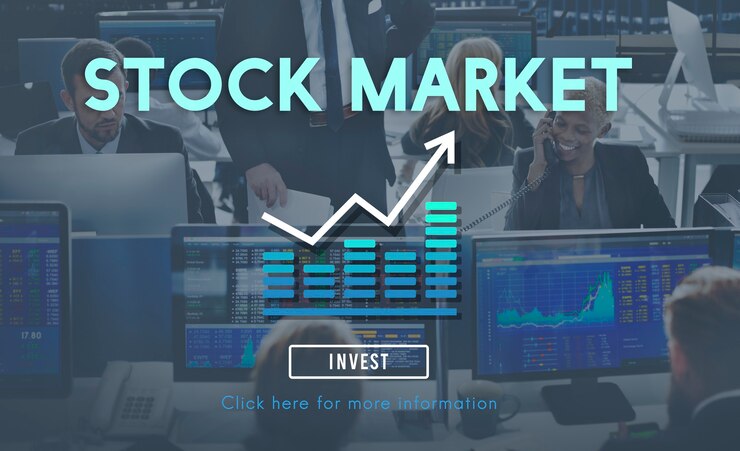ESG investing throughout the course of recent many years, there has been an eminent change in how financial backers approach portfolio the executives. Past looking for monetary returns, numerous financial backers currently think about non-monetary elements, including natural, social, and administration (ESG) issues, while pursuing venture choices. ESG putting includes incorporating these measures into the venture cycle to survey the drawn out supportability and moral effect of organizations. This pattern reflects more extensive cultural movements towards maintainability, moral strategic policies, and social obligation. Thus, ESG contributing has developed essentially, turning into a critical consider current speculation portfolios. In this article, we will investigate the job of ESG contributing, its effect on portfolio development, and why more financial backers are integrating these contemplations into their techniques.
Understanding ESG Criteria Environmental, Social, and Governance
Natural, social, and administration (ESG) rules are a bunch of guidelines utilized by socially cognizant financial backers to assess organizations and ventures. Natural variables evaluate an organization’s effect in the world, including how it oversees assets, diminishes waste, and addresses environmental change. Social elements center around an organization’s associations with workers, providers, clients, and the networks where it works. This incorporates issues, for example, work rehearses, basic freedoms, variety, and consumer loyalty. Administration factors assess how an organization is made due, taking into account perspectives like initiative, chief compensation, straightforwardness, and investor privileges. By integrating these ESG measures into the speculation dynamic interaction, financial backers look for monetary returns as well as sure cultural effect. In that capacity, ESG contributing is viewed as a method for adjusting individual qualities to speculation decisions while adding to a more manageable future.
The Rise of ESG Investing Societal and Market Drivers
The ascent of ESG contributing has been powered by various elements, including developing public attention to ecological issues, civil rights developments, and corporate administration embarrassments. Purchasers and financial backers the same are progressively requesting that organizations focus on supportability and moral practices. As the world countenances squeezing difficulties, for example, environmental change, pay disparity, and denials of basic freedoms, there is a rising longing to put resources into organizations that contribute emphatically to resolving these issues. Furthermore, there is a developing acknowledgment that organizations that neglect to consider ESG variables might be at more serious gamble of long haul monetary underperformance. Poor natural practices, social disparity, or feeble administration designs can open organizations to reputational harm, administrative punishments, and functional dangers, which could at last effect their productivity. Thusly, numerous financial backers see ESG contributing as a method for limiting gamble while supporting organizations that are situated for long haul achievement.
The Role of ESG in Portfolio Diversification and Risk Management
ESG contributing is in many cases seen as a method for adjusting monetary objectives to more extensive cultural qualities. For some financial backers, especially recent college grads and Gen Z, putting resources into organizations that have a positive social and natural effect is vital. This generational shift is driven by a developing feeling of obligation toward tending to worldwide difficulties like environmental change, civil rights, and financial imbalance. ESG contributing permits people to have a substantial effect through their speculations, guaranteeing that their cash is working for their monetary prosperity as well as for everyone’s best interests. Furthermore, as additional financial backers request ESG-centered venture choices, resource directors have answered by making an extensive variety of ESG speculation items, including shared reserves, trade exchanged reserves (ETFs), and individual stocks, making it simpler for financial backers to integrate ESG measures into their portfolios.

ESG as an Investment Strategy: Aligning Financial Goals with Values
One of the center benefits of ESG contributing is that it offers a method for overseeing risk. Organizations that neglect to address ecological, social, and administration gambles are progressively presented to reputational, functional, and administrative dangers. For instance, organizations with poor ecological practices might confront stricter guidelines or public backfire, which could bring about inflated expenses or lost income. Additionally, organizations with powerless administration designs might be more inclined to extortion, blunder, or leader turnover, all of which can hurt investor esteem. By putting resources into organizations that focus on ESG factors, financial backers can relieve these dangers, as organizations that are more straightforward, dependable, and practical will quite often have more grounded long haul possibilities. Truth be told, research has shown that ESG-centered speculations frequently outflank their non-ESG partners, with organizations that have solid ESG works on showing more prominent strength during seasons of market unpredictability.
ESG Investing and Financial Performance: Opportunities for Growth
While ESG contributing is basically connected with manageability and chance administration, it additionally offers open doors for monetary execution. Various examinations have shown that organizations with solid ESG rehearses are bound to beat in the long haul. For instance, organizations that focus on ecological manageability are in many cases more productive in their asset use, which can prompt expense reserve funds and higher benefit. Essentially, organizations that attention on friendly factors, for example, representative government assistance and local area commitment will generally fabricate more grounded associations with clients, prompting brand dependability and upper hand. Administration factors, for example, viable authority and straightforward independent direction, are additionally corresponded with predominant monetary execution. By integrating ESG factors into their venture investigation, financial backers can distinguish organizations with a solid history of monetary achievement and long haul development potential.
Challenges in ESG Investing: Data, Standardization, and Trade-offs
In any case, while the advantages of ESG contributing are clear, sustainable investing there are difficulties and reactions that should be tended to. One of the essential worries is the absence of normalization in ESG evaluations and revealing. Different rating offices might evaluate organizations’ ESG execution in an unexpected way, making it challenging for financial backers to think about organizations precisely. Also, the absence of predictable and dependable ESG information can upset financial backers’ capacity to go with informed choices. To address these difficulties, there is a continuous push for more noteworthy straightforwardness and normalization in ESG detailing. Administrative bodies like the European Association and the U.S. Protections and Trade Commission (SEC) are progressively zeroing in on ESG divulgences, determined to furnish financial backers with additional predictable and similar information. As the ESG scene keeps on developing, upgrades in announcing and straightforwardness will probably make it simpler for financial backers to integrate ESG factors into their portfolios.

ESG Investment Strategies: Negative Screening, Positive Screening, and Impact Investing
One more test of ESG contributing is the potential for compromises between monetary returns and social or natural effect. A few pundits contend that ESG contributing may prompt lower monetary execution since it might restrict the pool of likely speculations or focus on friendly or ecological targets over benefit. For instance, barring specific ventures, for example, petroleum products or tobacco from a portfolio could bring about botched open doors for significant yields. In any case, modern portfolios a huge number of ESG contributing contend that these compromises are frequently exaggerated, and that organizations that focus on ESG factors are bound to convey feasible, long haul development. As the interest for ESG ventures develops, more monetary items are being made that offer both monetary returns and social effect, showing that adjusting these objectives is conceivable. Financial backers can likewise utilize a scope of methodologies, from screening out unsafe organizations to effectively captivating with organizations to further develop their ESG rehearses.
The Future of ESG Investing: Trends and Regulatory Changes
As of late, the prominence of ESG contributing has prodded the improvement of an assortment of ESG-centered venture techniques. One normal methodology is negative screening, which includes barring organizations or businesses that don’t meet specific ESG standards. For instance, financial backers might decide to avoid organizations that are associated with petroleum derivatives, tobacco, or weapons producing. Another system is positive screening, where financial backers explicitly target organizations with solid ESG execution. This approach might include distinguishing organizations that are pioneers in environmentally friendly power, work rehearses, or corporate administration. Furthermore, influence money management is a methodology that spotlights on creating quantifiable social or natural effect close by monetary returns. Financial backers who seek after influence money management try to subsidize organizations or ventures that are straightforwardly tending to worldwide difficulties, for example, environmental change, destitution, and admittance to schooling. By picking the right ESG technique, financial backers can fit their portfolios to meet their monetary and moral objectives.
Conclusion
All in all, ESG contributing is assuming an undeniably significant part in current speculation portfolios, driven by developing interest for economical, moral, and dependable venture choices. As additional financial backers focus on natural, social, and administration factors, ESG contributing is turning into a critical part of portfolio development and abundance the executives. Whether driven by the craving for better long haul monetary execution, a feeling of social obligation, or the need to relieve risk, ESG contributing offers an integral asset for making a more practical and moral venture portfolio. As the ESG scene keeps on developing, enhancements in information straightforwardness, announcing principles, and venture items will make it simpler for financial backers to settle on informed choices and integrate ESG factors into their techniques. With the ascent of ESG contributing, the monetary business is pushing toward a future where monetary achievement and positive cultural effect can remain forever inseparable.













Leave a Reply